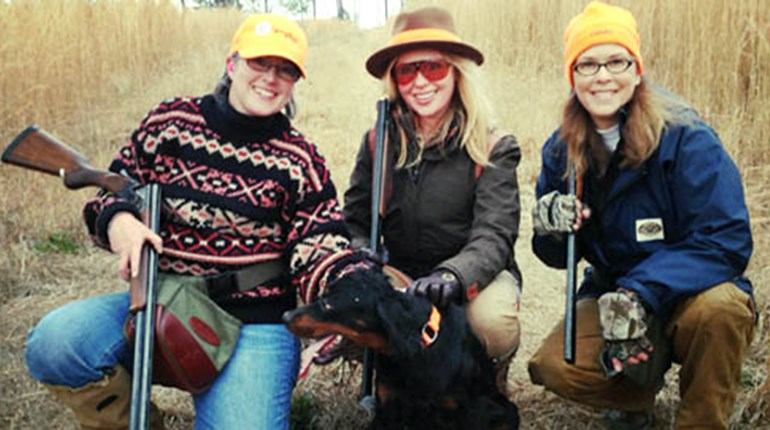
Traveling with a firearm comes with legal risks. Those risks grow more complex when you cross state lines. While many states are gun-owner friendly, some states view simply having a firearm as criminal behavior.
Nevertheless, if you carefully follow the rules, federal law does give you some protection. A provision of the federal law known as the Firearms Owners’ Protection Act (FOPA) protects those who are transporting firearms for lawful purposes from local restrictions that would otherwise prohibit someone from travelling through. Under the FOPA, notwithstanding any state or local law, a person is entitled to transport a firearm from where he or she may lawfully possess and/or carry the firearm to any other place in the U.S. where he or she may lawfully possess and/or carry it, if the gun is unloaded and locked out of reach. Basically, the FOPA protects travelers who carry firearms unloaded, locked in a case and stored in an area (such as a trunk or attached toolbox) where they are inaccessible from a vehicle’s passenger compartment and not visible from outside the vehicle. Any ammunition should be stored in a separate locked container. In vehicles without a trunk, the unloaded firearm must be in a locked container other than the glove compartment or console.
Still, regardless of these federal protections, travelers should be aware that some state and local governments treat this federal provision as an “affirmative defense” that may only be raised after an arrest. This is particularly true in northeastern states like New Jersey, New York, Connecticut and the District of Columbia, but also on the western seaboard in states like California, Oregon and Washington.
All travelers would be well-advised to have copies of any applicable firearm licenses or permits, as well as copies or printouts from the relevant jurisdictions’ official publications or websites documenting pertinent provisions of law (including the FOPA itself) or reciprocity information.
Despite the FOPA protections, travelling with a firearm can feel very complicated. Also, as state and local rules are constantly changing, this article should not be taken as legal advice, but only as a general guide—you must check the law in the jurisdictions you’ll be traveling to prior to leaving.
Pick the Safest Route
When you are making your travel plans, try to take the safest route by, if possible, avoiding jurisdictions that treat normal, lawful gun owners as criminals. New York City and New Jersey are two examples of places that have a long history of prosecuting gun owners from other states who mistakenly brought a gun into their jurisdictions.
So, before traveling to a hunt, a shooting competition or just on a vacation in which you want to bring your self-defense guns, research the rules of the states you plan to pass through on your trip and where you will end your travels.
The local rules can vary widely, and sometimes different law-enforcement officers in the same state may give very different answers as to what is or isn’t permitted. Realize that legal terms in one state can be used differently in another state. Also, state websites are not always updated in a timely manner.
A good place to start is nraila.org/gun-laws/state-gun-laws. Just click on your state, and a map will show the states you can, for example, carry your handgun in as a nonresident. But, again, as laws are constantly changing, you must also independently check the state or local jurisdiction’s laws that you’ll be traveling to in order to be certain you are not breaking any local gun laws.
After you research the current rules and have planned your routes carefully, take extra care to obey all laws, including speed limits, parking, passing, signaling to change lanes and others as you travel. The bad news is that many firearms owners have been arrested for possessing a firearm after being stopped for a minor traffic violation or as the result of being in a vehicle accident caused by someone else.
Also, realize that as soon as any firearm is carried on or about your person, or placed loaded or readily accessible in a vehicle, state and local laws regarding the carrying of firearms apply. If you seek to carry or transport firearms in such a manner, it is advisable that you determine what the law is by contacting the attorney general’s office in each state through which you may travel. You may also review the “Concealed Carry Reciprocity Guide” (available online at nraila.org/gun-laws or by calling NRA-ILA at 800-392-8683). Determine whether the state issues any necessary permits to nonresidents and how to obtain one, if so. While many states require permits to carry firearms, some will not issue them to nonresidents.
If an officer makes a random request to search your car, you can refuse. In many cases, they need a warrant and probable cause (a reason) to look beyond what is visible from the street and through the driver’s window to search. Be very cautious about what you say and how you act. The best thing is to be very polite and say very little other than yes and no.
Along your travel route, you should stop for the minimum requirements—or not at all—in the anti-gun states and zones.
If you are traveling with a trailer or camper that is being towed by a vehicle, it is advisable to transport the firearms unloaded, cased and locked separately. If your vehicle is of the type in which driving and living spaces are not separated, the problem becomes one of access. If the firearm is carried on or about the person, or placed in the camper where it is readily accessible to the driver or any passenger, state and local laws regarding concealed carrying of firearms may apply. It is recommended, therefore, when transporting firearms, you make certain they are unloaded, cased and placed in a locked rear compartment of the camper or RV, where it is inaccessible to the driver or any passenger.
As you travel, be aware that even gun magazines might be restricted; for example, in Colorado, magazines that hold more than 15 rounds are illegal to possess. This covers anytime, anywhere and includes magazines for hunting rifles. Magazines holding more than 10 rounds are illegal in Connecticut, but you can lock unloaded firearms in a case placed in the trunk and thereby pass through the state.
State and local regulations can vary widely. Florida, for example, has a law that permits having a firearm in plain view as long as it is in a snapped holster. Across the border in Georgia, the firearm can be loaded and in plain view, or loaded and stored in a glovebox.
As For the Airlines
While driving presents challenges when traveling with firearms and ammunition, flying can also be complicated—especially since particular officials may not understand the patchwork of laws. The variables are many, so nearly every person you meet along this trip could give different details.
The TSA has established specific requirements for transporting firearms and ammunition in checked baggage on commercial aircrafts (see sidebar).

Airlines can also add their own policies on top of TSA rules. On Delta.com, rules about firearms and ammunition are found under “shooting equipment.” There are many details on the required hard case, including that firearms must be in “a locked manufacturer’s hard-sided container specifically designed for the firearm, a locked hard-sided gun case or a locked hard-sided piece of luggage.”
As you take to the skies, remember to look at the rules in states where you have connecting flights, especially if you’ll be travelling through New York City or New Jersey. When you must recheck a firearm to fly out, you could be grabbed by local law enforcement.
Travelers should strictly comply with the FOPA and with airline and TSA policies regarding firearms transportation, avoid any unnecessary deviations on the way to checking in their baggage, be well acquainted with the firearms laws of the jurisdictions between which they are traveling, have any necessary permits or licenses ready for inspection and have copies of relevant provisions of current law or reciprocity information printed from official sources.
Despite federal law that protects travelers, authorities at New York and New Jersey airports have been known to enforce state and local firearm laws against airline travelers who are passing through their jurisdictions. In some cases, even persons traveling in full compliance with federal law have been arrested or threatened with arrest. The FOPA’s protections have also been substantially narrowed by court decisions in certain parts of the country, particularly in the Northeast. Persons traveling through New York and New Jersey airports may want to consider shipping their firearms to their final destinations rather than bringing them through airports in these jurisdictions.
Many Americans today are running into these legal entanglements as there are now more than 18 million gun owners who have permits to carry concealed, and this doesn’t count the many people in the growing number of states that allow “permitless” or “constitutional carry.” You might not see this news reported in by the mainstream media, but many studies have determined that Americans who have concealed-carry permits are our most law-abiding citizens. Nevertheless, officials in some states are committed to treating these citizens as criminals if they cross into their jurisdictions.
Passing a national reciprocity bill would end much of this frustration and the unfair prosecutions of gun owners who simply made the mistake of driving or flying into another state or jurisdiction. The NRA has been lobbying for such a federal bill for years now and will continue to do so; the Second Amendment, after all, applies to all American citizens.
How To Fly with a Firearm
• All firearms or ammunition must be checked with the air carrier as luggage or inside checked luggage. Firearms, firearm parts and ammunition are prohibited from carry-on baggage. Firearm parts include barrels, magazines, frames and other internal parts of a firearm.
• All firearms and/or ammunition must be declared orally or in writing in accordance with the air carrier’s procedures. Civil and criminal penalties may be applied for failure to declare a firearm in checked baggage.
• All firearms must be unloaded.
• The firearm must be carried in a hard-sided container. The container must be locked, and only the passenger may retain the key or combination.
• All checked baggage is subject to inspection. If during the inspection process it is necessary to open the container, the air carrier is required to locate the passenger and the passenger must unlock the container for further inspection.
• Ammunition is prohibited from carry-on luggage. Ammunition must be transported in the manufacturer’s packaging or other packaging suitable for transport.
For more information:
www.tsa.gov/travel/transporting-firearms-and-ammunition


































